Vineyards – lots of them, planted to Sauvignon blanc and Cabernet Sauvignon grew on the north east fringes of what is now the Arts District along the edge of the Los Angeles River. The years were the 1830’s and the 1840’s and the man responsible for these vines was Jean Louis Vignes, a french immigrant who came to California in 1831. By the way, a street near downtown still carries his name. By 1849 his ‘little’ vineyard called El Aliso was California’s largest producer of wine. Interested in more of this early vineyard history in Los Angeles – we highly recommend the book, Los Angeles Wine by Stuart Douglass Byles.
Fast forward some 40 years and fields of citrus trees had replaced the vineyards in this area – their blossoms fragrant in early spring wafting through the orchards growing here.
So today as you close your eyes the only connection you might find to these earlier agricultural times is the sunshine on your face and the ground buried beneath the concrete which you are not able to directly touch with your feet.
Any effort to connect to some distant thread and nostalgia of history for what was here before – is certain to be unsuccessful. The urban noises and smells of the neighborhood will quickly see to that.
Gritty, grimy, dirty and industrial – by WWII rail freight had turned to trucking freight and warehouses sprouted and the area looked and smelled seedy. An iteration of change was slow to take place and occurred over several decades.
Artists started moving into the area in the late 1970’s – accelerated in 1981 by the city passing an “Artist in Residence” ordinance, allowing artists to use the old industrial and commercially zoned buildings.
Today this is a fun part of town – with energy coming from young people who congregate here in the evenings at a variety of design + restaurant + drinking spaces. And to some extent much of this neighborhood is an outdoor art gallery – with a variety of street art and graffiti commonly adorning the walls of buildings.
- A + D Museum
- Cleveland Art
- Resident DTLA
- Hauser & Wirth
Cleveland Art
is like a museum, but its not. Everything is for sale – contains a wonderful collection of various interior decorations and furnishings. Stop by the front wall – ‘sprout’ wings from the mural painted here and have someone take your photo. the wings in front and have someone take your photo. Visit: www.clevelandart.com
Container Yard is about an acre and contains mural covered graffiti and street art on walls both outside (seen from the streets) and inside. Great place for various hip events. Visit: www.thecontaineryard.com
Hauser & Wirth is located at 901 East 3rd Street and is a little community within the arts district. Features a bookstore, exhibition space for various art, and open space for relaxing and a fine restaurant, Manuela. Visit: www.hauserwirthlosangeles.com
Institute of Contemporary Art or ICA LA for short, is located in a gritty part of downtown Los Angeles at 1717 E 7th St – near the Arts District located among numerous warehouses, homeless camps, and trucks making deliveries. This museum has undergone a remarkable change in space and location. Formerly the Santa Monica Museum of Art, it was originally founded in 1984. We initially visited the museum at their prior location at Bergamot Station (Southern California’s largest complex of art galleries) in Santa Monica. The museum was displaced by the Los Angeles Metro with a much needed line that now runs from downtown Los Angeles to Santa Monica.
During our initial visit to the old museum in Santa Monica we witnessed one piece of artwork that was attracting flies (first time we’ve seen in this in the hundreds of art spaces we have visited) – a watermelon on the ‘decline’ was stabbed through with a pole; it was part of a larger exhibit.
Their new location has nearly 13,000 square feet of gallery space. The focus of the museum is to display contemporary art, regardless of origin (lots of international artists represented). The space pushes the boundaries of art sometimes based on the several very eclectic pieces of art we have seen on display over the years.
The primary room is open and large – the overall space is divided into several sections including for exhibitions, the project room – programs and events and a small cafe. Also be sure to visit the museum store housed in it’s own room featuring a number of one-of-a-kind artisan products. ICA LA is open to the public free of charge. Visit: www.theicala.org
Resident DTLA is located at 428 S Hewitt St. This fun place is partially a bar, an outdoor beer garden and music space. Visit: www.residentdtla.com
For more information about this very historical part of town, visit: www.artsdistrictla.org

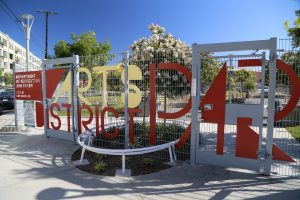
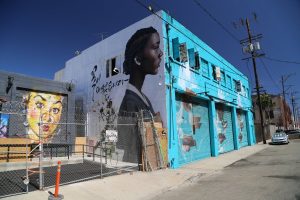
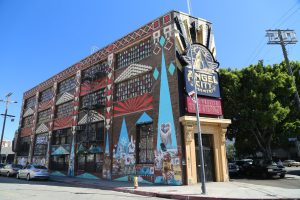
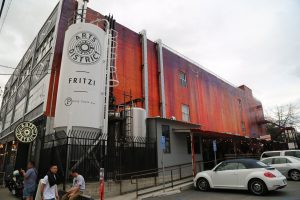
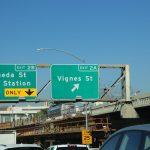
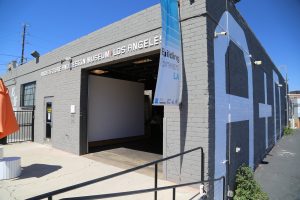
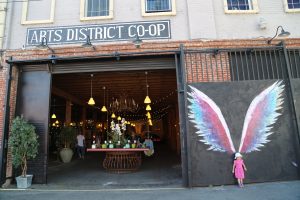
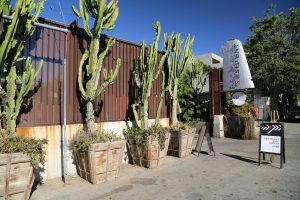
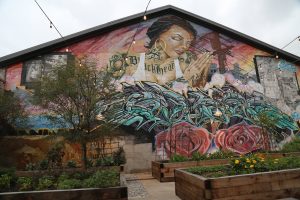




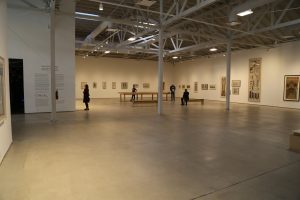
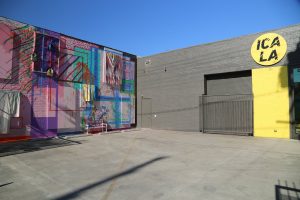



Leave a Reply